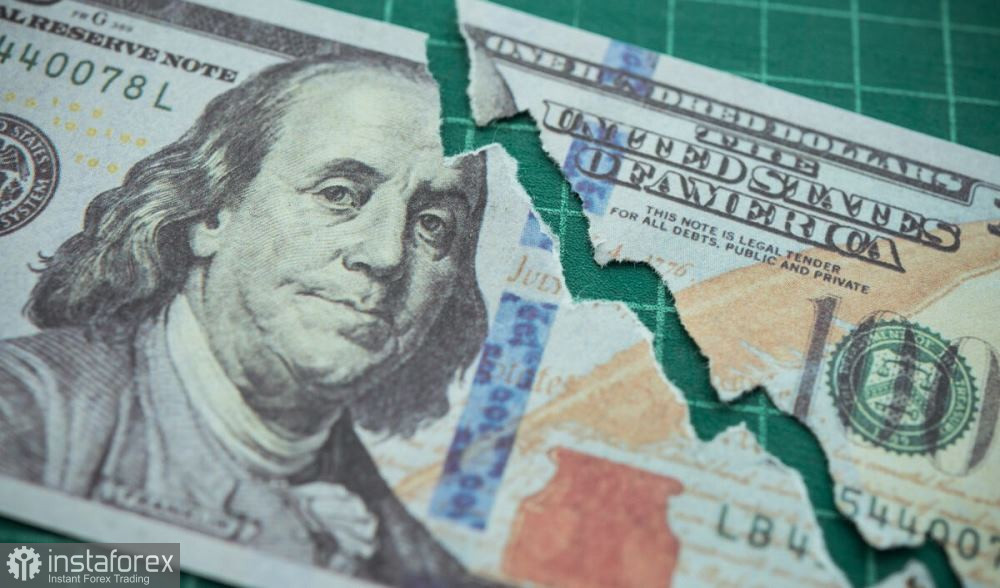The EUR/USD pair soared at the start of the new trading week, testing the 7th figure. The dollar was under pressure amid the unfolding crisis in the U.S. banking sector. The collapse of Silicon Valley Bank triggered the price turbulence at the currency market, and this turbulence was not in favor of the U.S. currency.

Yesterday it became known that another large bank (Signature Bank) collapsed in the United States, thereby increasing panic moods among investors. Additional pressure on the greenback came from Goldman Sachs, whose currency strategists have radically revised their expectations regarding the prospects for a Fed rate hike in March. As a result, the U.S. dollar index updated almost a month low today, reflecting the general situation in the foreign exchange market.
Bank Crash and its Consequences
Signature Bank closed this week, which had $110 billion in assets at the end of last year. It had an extensive network of branches (about 40 in most states of the country) and almost 2,000 employees. The regulator decided to close the bank "because of systemic risks." The U.S. Treasury, Federal Reserve and the Federal Deposit Insurance Corporation issued a joint statement saying depositors will receive reimbursements—taxpayers would not suffer any losses.
Recall that at the end of last week, another large bank went bankrupt in the United States—Silicon Valley Bank—whose assets were estimated at more than $200 billion.
The U.S. authorities are now taking active steps to address the growing concerns of bank customers about the security of their deposits. And not only of a verbal nature. For example, the Federal Reserve announced the creation of a credit fund for the country's banks. A new Bank Term Funding Program will be created, offering loans for up to one year to banks, pension funds, credit unions and other institutions secured by U.S. Treasury obligations, agency debt obligations, etc. Representatives of the Fed did not name a specific figure for the size of the new loan program, but made it clear that it would be very significant. According to the statement of the U.S. Treasury Department, the agency plans to allocate up to $25 billion from the Exchange Stabilization Fund to support financing of the program. At the same time, the Fed, according to the statement, "does not expect that there will be a need to use these additional funds."
During Monday's U.S. trading session, U.S. President Joe Biden will issue a special statement on the banking sector to calm the panic that apparently still hovers among investors.
SVB, Goldman Sachs, and the Fed
The SVB bankruptcy is the largest since the 2008 financial crisis. Overall, the collapse of two large banks is a serious stress test for the U.S. financial system. But still, according to many experts, this situation will not trigger a major financial crisis in the U.S. (with the same analogy in 2008).

But how would this affect the resolve of the Fed members, who have been hawkish for the past weeks? Less than a week ago, on Tuesday, the market began discussing the increased probability of a 50-point hike at the Fed's March policy meeting. Whereas today there are already opposite assumptions—that the Fed might not raise rates this month. At least, that was the forecast made today by Goldman Sachs strategists. In their opinion, the regulator will take a short-term pause in the light of the serious stress in the U.S. banking system. As for the further prospects, Goldman Sachs analysts expect three 25-point hikes in May, June and July.
Such a sharp reversal in expectations put pressure on the greenback, which sank across the market.
Conclusions
The Fed may likely take a pause in March until U.S. regulators provide significant liquidity to banks facing deposit outflows and build depositor confidence.
According to the CME FedWatch Tool, there is now a 92% chance of a 25-point rate hike at the end of the Fed's March meeting. Meanwhile, at the beginning of last week the market was almost certain (75%) that the regulator would implement a 50-point scenario.
As you can see, the hawkish expectations are indeed declining, putting pressure on the dollar. The complexity of the situation is also in the fact that from today the so-called "silence mode" is in effect: within 10 days before the meeting, members of the Fed do not have the right to announce their position in public.
This puzzle will get more complicated tomorrow (March 14) when the data on U.S. inflation growth will be released. If the CPI comes out in the green again, the dollar will regain some of its lost ground. If inflation slows down more than expected, the EUR/USD might hit the upper boundary of the Kumo cloud, i.e., 1.0800 resistance level.
In conditions of such uncertainty for the pair, it is advisable to maintain a wait-and-see attitude.
 English
English 
 Русский
Русский Bahasa Indonesia
Bahasa Indonesia Bahasa Malay
Bahasa Malay ไทย
ไทย Español
Español Deutsch
Deutsch Български
Български Français
Français Tiếng Việt
Tiếng Việt 中文
中文 বাংলা
বাংলা हिन्दी
हिन्दी Čeština
Čeština Українська
Українська Română
Română

